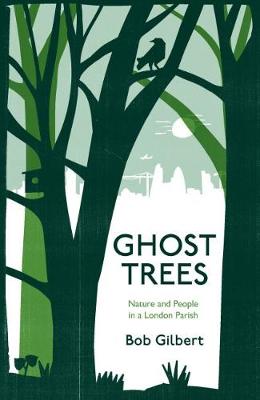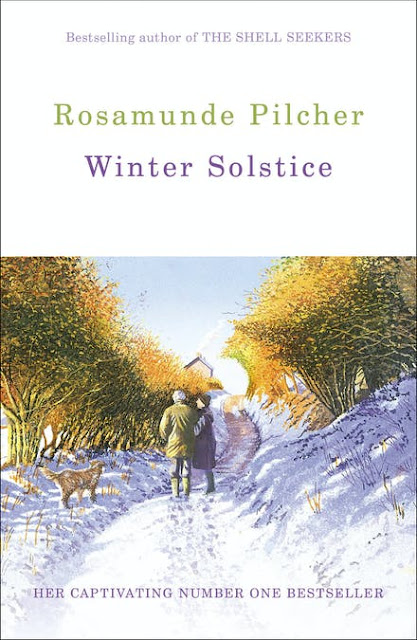Ghost Trees: Nature and People in a London Parish by Bob Gilbert
‘Without our stories we can become abstractions in a virtual world, floating in an eternal present that is not so much ‘”here and now” as “now and nowhere”.’
When Bob Gilbert’s wife Jane was ordained as an Anglican
priest and assigned to All Saints Church in Poplar, the family - two adults,
two children, some goldfish and ‘a particularly outraged cat’ - moved from
North London to a vicarage in the heart of the East End. Gilbert was already an
urban naturalist, his enthusiasm owing its beginning, at least in some small part, to the writer Richard
Adams, who once dismissed London as a dismal place where nothing grew. Gilbert
knew this was nonsense; he’d been studying the nature of the inner city for
years, and he was getting fed up with many writers’ knee-jerk disdain for the
animals and plants inhabiting the places in which as much as 80% of the UK’s
population now spent their lives.
And now Gilbert had somehow – and unexpectedly – become a
‘vicar’s wife’. There is, he points out, a long tradition of clergymen
naturalists. He may not be a clergyman himself (he is in fact a Quaker), but
what better footsteps in which to follow? Most particularly, he considers
Gilbert White, who famously studied the natural history of the small village of
Selborne for over forty years.
'” (White) says in one of his letters, “in zoology as in botany, all nature is so full, that the district produces the greatest variety that is the most examined.”’
In other words, focusing on a small area over a long period
of time can tell you more than a quick scan of a large one. Gilbert’s mind was
made up;
‘My ‘district’, I decided, would be the new parish.’
And so Gilbert walks the streets of Poplar, studying the
animals that live on its wastelands, gardens, riverbanks and streets, the
plants that cling to its neglected walls, and most especially the trees that
manage to flourish in this most traffic-infested area. In a borough named after
a tree, he wonders about the origin and location of that first poplar – but his
quest leads him far beyond trees, into the long and complex social history of
this ‘maze-like’ area that, like many parts of London, has seen numerous
communities and industries come and go. For, as he explains, in his
investigations into the area’s natural life;
‘It became clear to me that many of the questions I found myself asking were also about past influences on the landscape. I became increasingly involved in a form of ghost hunting, seeking out the resonances of what once had been.’
Successive waves of immigration have brought people from China,
France, Scotland, Ireland and Bangladesh to Poplar, and every group has
introduced new lifestyles, and with them new plants and produce, from
mulberries to vines, figs, brown mustard plants, gourds and giant marrows. In learning
to read the past through the landscape around him, Gilbert uncovers all sorts
of remarkable stories, and one of the many things I love about this book is the
skillful way in which he finds the connections between nature and people.
 |
| Mulberry tree (image: onlondon.co.uk) |
The history of the failed silk industry – initiated by James I in the early 1600s – leads him to look for associations with mulberries, and to find many streets, pubs and even a school, bearing that name. The persecuted Huguenots brought more mulberry trees to London in the late 17th century – but only Gilbert could manage to dig out that plant’s connection with floating harbours built in secret in the East India Docks during the latter part of the Second World War. It is also interesting to note that the failure of James I’s plans may also have been, at least in part, due to the ineptitude of the man he put in charge of the project. William Stallenge was a former government spy who appears to have known nothing about horticulture. His unsuitability for the job didn’t stop the king paying him handsomely, in advance. How familiar does that sound in 21st century Britain?
An investigation into the old Bryant and May match factory
in Bow gives us another insight into the industrial history of the East End.
Like many other manufacturers of the day, Mr Bryant and Mr May were Quakers; they tried to introduce ‘safety matches’ made without the traditional use of
phosphorus, which led to factory workers suffering the disease of ‘phossy jaw’.
Did this attempt at social reform work? In the short term, at least, it did not; people were not prepared to
pay more for their matches. Plus ça change….
Gilbert’s study of the history of the horse chestnut tree reveals what is to me one of the best stories in the book, as he unravels the chain of events leading from the humble conker to the shortage of acetone needed for the production of cordite in World War One, a Jewish chemistry lecturer at Manchester University, local schoolchildren, an East End gin distillery, the Balfour Declaration and the first president of the modern state of Israel. Who knew? Not me – and not the vast majority of the general public either, for in a populist operation worthy of Whisky Galore, the locals kept the whole thing secret throughout the war.
 |
| Chaim Weizmann |
‘my own apportionment of the floodplain gravels, deposited by mile-wide estuaries and once swollen ice-melt rivers.’
The woodlice underneath the bark of the plane tree;
‘a creature for which I have always had an affection. Woodlice were my very first ‘pets’…the only land-living relatives of the crab, the prawn and the lobster.’
A winter storm leads him to wonder just how many leaves a
tree produces – an oak, it seems, can have between 200,000 and 250,000. Before long Gilbert is conducting experiments
in his kitchen, weighing fallen leaves to calculate just how many tons are
being deposited on his lawn and flower beds. (The answer tells us just why we
find sweeping them all up such a never-ending chore.)
 |
| Bob Gilbert (image: Greenbelt Festival) |
For Gilbert is a true polymath, his inquiring mind finding interest in everything, and taking us with him down every side turning and diversion that presents itself. He quotes Shakespeare, John Gay. Amy Levy and Sylvia Plath, he revisits Greek myths and the Brothers Grimm. Islam, Christianity, Judaism, Sikhism and Buddhism all get a look in, and along the way, in an attempt to find the course of the old Black Ditch, Gilbert even has a go at dowsing with 'live artist' Amy Sharrocks.
Bob Gilbert may sometimes not find what he is looking for,
but he always finds something else, and most importantly, finds the joy in that
something else. It is this enthusiasm for the stories he uncovers, coupled with
a wonderful, often self-deprecating, humour, that make Ghost Trees such
an interesting, imaginative and inspiring book.
Ghost Trees: Nature and People in a London Parish by Bob Gilbert is published by Saraband.
Ghost Trees: Nature and People in a London Parish by Bob Gilbert is published by Saraband.




I've downloaded this to my Kindle and am very much looking forward to reading it. I love his description of himself as a 'Vicar's wife'! One of these days we're planning a few days in the part of Hampshire where Gilbert White and Jane Austen lived. We passed through the area on the way back from Surrey last year and I hadn't realised their houses were quite so close to each other. Have you read '21st. Century Yokel' by Tom Cox? And 'Footnotes' by Peter Fiennes? You might like them as both have a really strong sense of the author's personality and thoughts. Also anything by Robert McFarlane.
ReplyDeleteThank you so much for your good wishes for my husband. He's doing ok, rather bored sitting waiting for Monday to arrive. He's a very keen reader but has zero concentration at the moment. We can't visit of course because the hospitals are not allowing visitors so that makes it hard for him and us. Thank goodness for Google Duo on the phone, it's brilliant.
I was very touched by your offer to send me some books. That's so nice of you! I have plenty but thank you anyway. I will answer your PM on Twitter soon, things have been rather difficult as you can imagine but have settled down over the last few days. I shall be blogging again soon as I miss it and have several books to talk about.
Hello Cath, and thanks for your comments.
DeleteI haven't yet read 21st Century Yokel, though I do follow Tom Cox on twitter and I think I have several of his books on my shelves in Edinburgh - I must dig them out. I've not heard of Peter Fiennes, I will look him up. I have read one book by Robert MacFarlane, and also follow him on twitter - he is marvellous. I also want to read Dara McAnulty's Diary of a Young Naturalist, which I heard him read on Radio 4.
I hope your husband got on OK today? Hospital always does seem to involve a lot of sitting around waiting, doesn't it? Though a friend had to go to A & E the other day (allergy problem, now sorted) and she said it was empty - she got seen in no time. I suppose it depends partly on where you live - we are lucky to be up here in NE Scotland. And I can understand that it is difficult to read in hospital - when my middle daughter was born prematurely, she had to stay in the neo-natal unit for two weeks, and as I lived so far away I was allowed to stay too. A friend said 'oh you will have so much time to read novels!' but in fact all I read were the magazines in the day room (and I expect they're not allowed at the moment either...) It is very hard to concentrate in there.
Take care, speak soon.
What an interestjng article.
ReplyDeleteI lived near Poplar.
I followed up reading anout mr Gilbert, after listening to Easter plants programme.
Sorry not to be there now